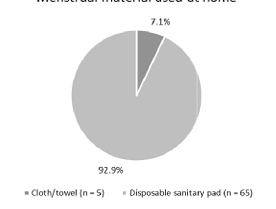Investigating the Menstrual Health Practices and Needs of Rohingya Women Refugees Living in Malaysia
DOI:
https://doi.org/10.5530/ctbp.2024.3s.12Keywords:
menstrual health, menstrual management, menstrual needs, refugees, women’s healthAbstract
The Rohingya people are the most marginalized minorities in the world. Being female refugees in Malaysia, they are vulnerable to many challenges which may impact their menstrual hygiene. Currently, not much is known about their menstrual health practices and needs in Malaysia in which this knowledge gap needs to be addressed. This study aimed to identify the menstrual health practices and needs among Rohingya women refugees and determine the relationship between their socio-demographic profile and menstrual experiences. A cross sectional study involving 18 to 55 years old Rohingya women attending QFFD Clinic managed by IMARET in Selayang, Selangor between April to November 2022 was conducted. The MPQ and MPNS-36 were included practices and needs of Rohingya women in Malaysia. Nevertheless, they performed poorly in addressing their menstrual experiences. Thus, there is a need to include menstrual health humanitarian crisis



